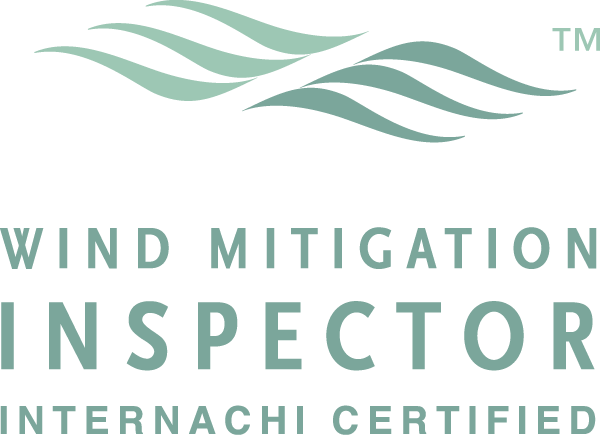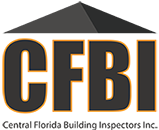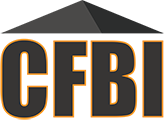Central Florida Wind Mitigation Inspections
Save money on your home insurance while ensuring peace of mind.
What is a wind mitigation inspection?
Unlike a full home inspection, wind mitigation focuses specifically on the parts of the structure that affect wind resistance. These inspections are especially important in Florida, where building codes and insurance policies are heavily influenced by the risk of hurricane damage.


Key features evaluated in a wind mitigation inspection
During a wind mitigation inspection, the inspector looks for several critical construction features that influence a home’s ability to resist wind. These include:
Roof Shape and Structure:
Certain roof shapes, such as hip roofs, are more aerodynamic and perform better in high winds compared to gable roofs. Inspectors also examine the roof decking attachment (nail size, spacing) and the overall structural integrity.
Roof Covering:
Roof-to-Wall Connections:
Secondary Water Resistance (SWR):
This refers to an additional barrier beneath the roof covering that helps prevent water intrusion in case the outer layer fails. An SWR can offer extra protection and lead to insurance credits.
Opening Protection:
Doors, windows, skylights, and garage doors are checked for wind- and impact-resistant features. Shutters, impact glass, or other protective systems are essential in hurricane zones.
Age of the Home and Roof:
Newer homes, especially those built after the 2001 Florida Building Code updates, often incorporate more wind-resistant construction methods. Older homes may qualify for discounts if upgrades have been made.
Why choose CFBI?
Florida is no stranger to high winds, hurricanes, and tropical storms. With this reality comes the need for homeowners to take proactive steps in protecting their property from wind-related damage. One of the most effective ways to do this—while also potentially reducing insurance premiums—is by obtaining a wind mitigation report inspection. This type of inspection evaluates how well a home can withstand strong winds and provides valuable documentation that insurance companies use to determine discounts for wind-resistant features.
Additionally, the inspection provides homeowners with:
Peace of Mind:
Knowing how well your home is equipped to handle high winds can be reassuring, especially during hurricane season.
Actionable Insights:
If your home lacks certain features, the report can guide future upgrades to improve safety and insurance discounts.
Increased Property Value:
Homes with documented wind mitigation features may be more attractive to buyers and real estate agents, especially in storm-prone areas.
Who should get a wind mitigation inspection?
While not legally required for all homeowners, wind mitigation inspections are strongly recommended for:
- Homeowners seeking to lower insurance costs
- Buyers purchasing property in hurricane-prone areas
- Owners of older homes who have made wind-resistant upgrades
- Anyone unsure about their home’s wind protection features
In Florida, where hurricanes are a seasonal reality, most insurance companies will encourage or even require a wind mitigation report before offering certain coverage options or discounts.
Wind mitigation inspections offer an affordable and highly beneficial way to protect your home, improve safety, and reduce insurance premiums. With Florida’s vulnerability to extreme weather, understanding your home’s wind-resistant features is not just a smart financial decision—it’s also an investment in long-term resilience and peace of mind.
Whether you’re a new homeowner, planning to upgrade your roof, or simply want to lower your insurance bill, a wind mitigation inspection is a step worth taking. Be sure to hire a state-licensed professional, like CFBI, who follows all Florida Building Code standards, and don’t forget to update your report whenever major improvements are made.
Call For a Quote:
407-863-0651
FAQs
Have questions about the home inspection process? Our FAQs cover everything you need to know before scheduling your wind mitigation inspection.
What is a wind mitigation inspection?
Why is a wind mitigation inspection important in Florida?
Is a wind mitigation inspection required by law in Florida?
What does the inspector look for?
Inspectors look for key wind-resistant features such as:
- Roof shape
- Roof covering materials
- Roof-to-wall connections
- Roof deck attachment
- Secondary water resistance (SWR)
- Opening protection (impact-resistant windows/doors)
What documents do I receive after the inspection?
Does replacing my roof help with wind mitigation?
Yes, especially if it’s done to current Florida Building Code standards. Stronger roof attachments, newer materials, and secondary water resistance help.
Do new homes automatically qualify for discounts?
Many new homes are built to modern codes and may already include wind mitigation features, but an inspection is still necessary to validate discounts.
How do I schedule a wind mitigation inspection?
Click here to schedule your wind mitigation inspection today.

